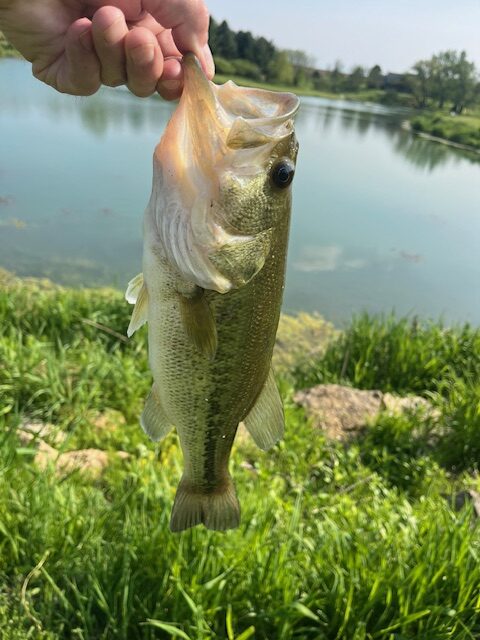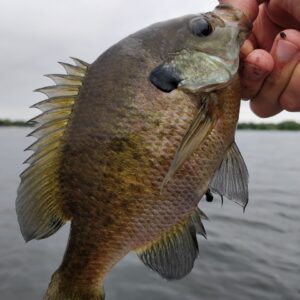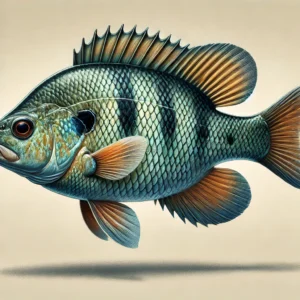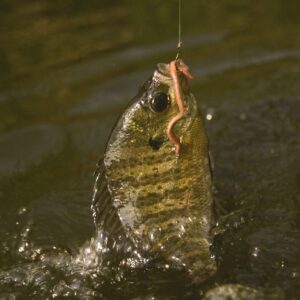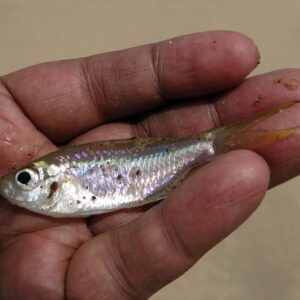The largemouth bass (Micropterus salmoides) is one of the most popular and well-known freshwater sport fish in North America. Largemouth bass are not only a cornerstone of freshwater fishing but also an integral part of the ecosystems they inhabit, contributing to both biodiversity and ecological balance.
Appearance
Color: Largemouth bass typically have a green to olive-green body with a lighter, often white or yellowish underside. They are characterized by a dark horizontal stripe running along their side from the gill cover to the base of the tail.
Size: They are known for their impressive size. Adult largemouth bass generally range from 12 to 20 inches (30 to 50 cm) in length, but can grow much larger. Record-breaking specimens have reached lengths of over 30 inches (76 cm) and weights of over 20 pounds (9 kg).
Body Shape: They have a robust, elongated body with a broad head and a large mouth that extends past their eyes. The mouth is particularly distinctive, often described as “largemouth” because of its large size relative to the head.
Habitat
Range: Largemouth bass are native to the eastern United States, but they have been introduced to various regions worldwide, including parts of Europe and Asia.
Preferred Environment: They inhabit a wide range of freshwater environments, including lakes, rivers, ponds, and reservoirs. They prefer warm, still or slow-moving waters with abundant vegetation, which provides cover and hunting grounds.
Behavior
Feeding: Largemouth bass are aggressive predators. Their diet mainly consists of smaller fish, insects, amphibians, and occasionally small mammals or birds. They use their large mouths to engulf prey and can be quite opportunistic in their feeding habits.
Activity: They are generally more active during warmer months and are known to be particularly aggressive during their spawning period in spring and early summer. They can be found near structures like submerged logs, rocks, and aquatic plants.
Spawning: Largemouth bass spawn in shallow waters, often creating nests in sandy or gravelly substrates. The male bass builds and defends the nest, attracting a female to lay eggs. After fertilization, the male guards the eggs and the hatchlings until they are capable of swimming on their own.
Angling and Conservation
Fishing: Largemouth bass are a favorite target for sport fishermen due to their size, fighting ability, and the challenge they present. They are commonly caught using a variety of techniques, including artificial lures like crankbaits, plastic worms, and spinnerbaits.
Conservation Status: Largemouth bass populations are generally stable and widespread. They are often stocked in lakes and ponds to support recreational fishing and are also subject to various conservation and management practices to ensure sustainable populations.
Ecological Role
Predator: As apex predators in their aquatic habitats, largemouth bass play a significant role in controlling populations of smaller fish and maintaining the balance of the ecosystem.
Habitat Impact: They can influence the structure of fish communities in their environments, affecting the abundance and behavior of other species.

